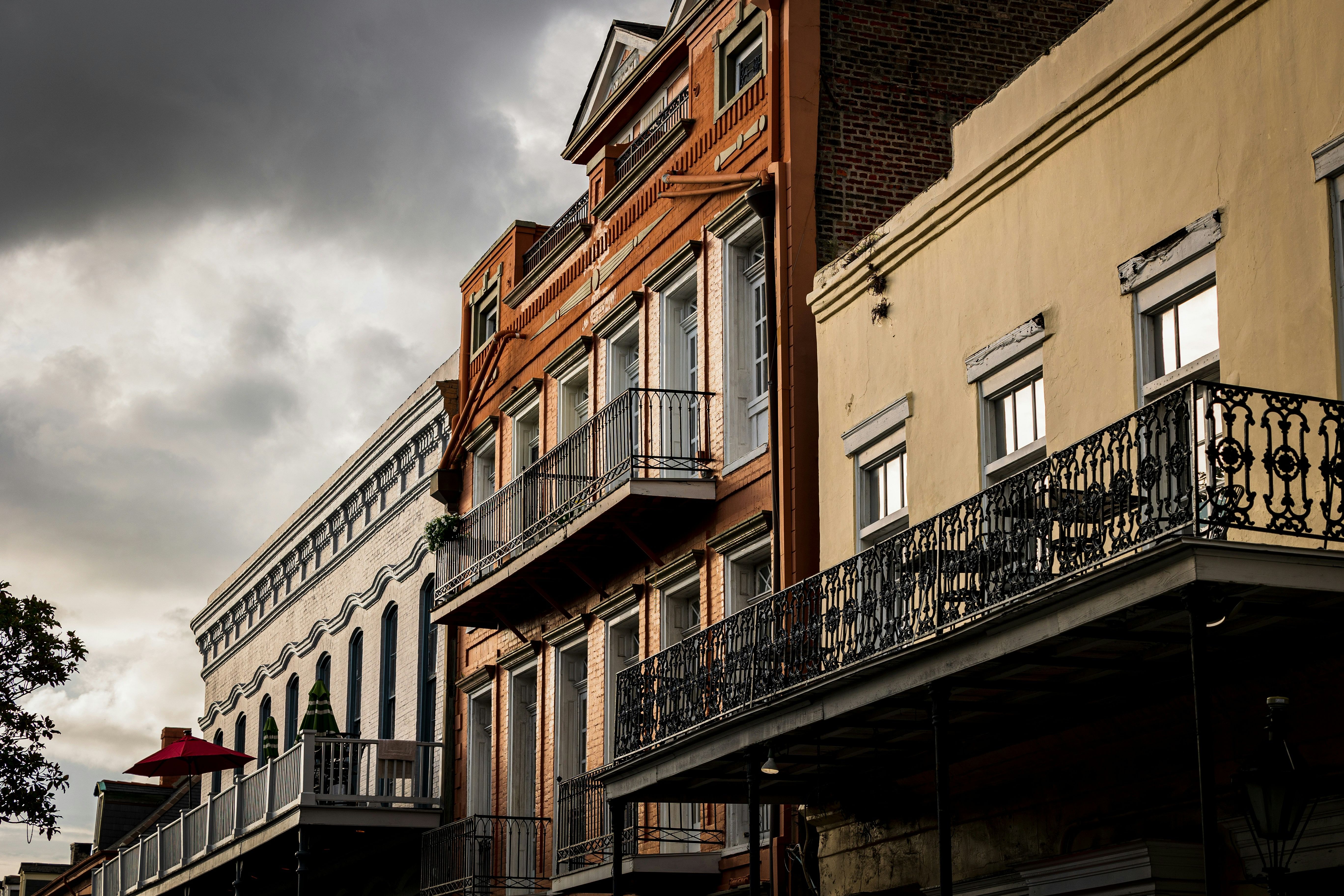
The History of Vampires and Their Origins
The History of Vampires and Their Origins

Vampires have fascinated the human imagination for generations. They walk the line between life and death, charm and horror, seduction and destruction. Their stories appear in cultures across the globe, but Europe is where the modern idea of the vampire truly began to take shape. Whether whispered through folklore or carved into literature, vampires have continued to evolve while holding fast to our darkest fears about mortality, disease, and the unknown.
Take a tour with French Quarter Phantoms through the oldest vampire stories in Europe, from the Balkans to Hungary to the British Isles, and finish with how the legends came to America (and especially New Orleans)!
Blood-Drinking Spirits in the Ancient World
Long before the term “vampire” was spoken, civilizations feared beings who returned from the dead to harm the living. In ancient Mesopotamia, stories were told of female demons like Lilitu and Lamashtu, who preyed on the vulnerable and drank the blood of children. These entities were often blamed for stillbirths and unexplained illness.
The Greeks and Romans believed in restless dead as well. They told of lamiae, creatures who seduced men before devouring them, and empusae, shape-shifting demons with flaming hair who fed on the life essence of humans. These early myths reflected the fear that the grave might not be the final resting place.
Eastern Europe: The Cradle of Vampire Lore
If vampire stories have a true home, it’s in Eastern European countries like Hungary, Serbia, Bulgaria, and Romania. All of the above carry some of the most detailed and feared vampire traditions in Europe. The word “vampire” itself even entered the English language in the early 18th century from Slavic sources.
Vampires in these areas were not handsome or refined. They were described as bloated, purple or red from feeding on blood, with long nails and animal-like strength. Communities often blamed mysterious deaths or disease outbreaks on vampires. In many cases, villagers exhumed corpses to perform rituals meant to stop the supposed undead from rising again. These rituals could include staking the corpse, decapitating it, burning it, or sprinkling poppy seeds over the grave so the vampire would be distracted trying to count them.
Official records exist of such exhumations and trials. The fear was real enough that it even caught the attention of rulers and church leaders.
Elizabeth Bathory: The Blood Countess of Hungary
Elizabeth Bathory is one of the most infamous figures in Hungarian history. Born in 1560 into a powerful noble family, Bathory lived in the Kingdom of Hungary during a time of political turmoil and superstition. While her life was one of luxury and influence, her name would later become synonymous with horror.
Elizabeth Bathory is often called the “Blood Countess” because of the gruesome legends surrounding her. According to reports from the early 17th century, she tortured and killed possibly hundreds of young servant girls in her castle. The most enduring and chilling part of her tale is the claim that she drank and bathed in the blood of virgins to preserve her youth and beauty. This particular act, whether true or exaggerated, became a major link between her and the evolving vampire myth.
Her noted behavior included blood obsession, nighttime activity, and cruelty toward the innocent, all which mirror elements of vampire folklore spreading across Europe. Bathory was eventually arrested, tried, and imprisoned in her own castle until her death in 1614, but her legend lived on. Writers and storytellers seized on her story, and she became a gothic icon centuries later.
The Romanian Drăculea: Vlad the Impaler
The most famous vampire in the world, Count Dracula, finds his origins in blended Hungarian and Romanian history. Vlad III Dracula, also known as Vlad the Impaler, ruled the region of Wallachia during the 15th century. Though he was not a vampire, his brutal tactics against the Ottoman Turks and tendency to impale both enemy and civilian alike on wooden stakes earned him a dark reputation.
The name “Dracula” comes from the Romanian word “Drăculea”, which means “son of Dracul.” Vlad’s father, Vlad II, was inducted into the Order of the Dragon. Ironically, this was actually a chivalric order founded to defend Christianity in Eastern Europe against Islamic expansion. As a member, Vlad II took the name “Dracul,” which means “the Dragon” in medieval Romanian, though it later came to be associated with “the devil” due to linguistic shifts. Therefore, “Drăculea” or “Dracula” simply meant “son of the Dragon.”
Romanian folklore already included vampires known as strigoi. These were undead spirits that could rise from the grave to suck the blood of the living, spread illness, and cause general misfortune. A strigoi might be the spirit of someone who lived an evil life, died without being baptized, or was cursed by a witch.
Bram Stoker, when writing Dracula in the late 19th century, chose this name after encountering historical references to Vlad III while researching Eastern European ethnic history in the Hungarian region of Transylvania (now in present-day Romania). Although the novel’s vampire character shares little with Vlad the Impaler beyond the name and Transylvanian origin, the historical and linguistic roots gave the fictional Dracula a dark and mysterious authenticity that helped make him one of literature’s most enduring villains.
The Székely-Hungarian Origins of Stoker’s Dracula
In the British Bram Stoker’s 1897 novel Dracula, Count Dracula is not described as Romanian, but rather as a Székely, a possibly Turkic subgroup of Hungarians who presently live in the eastern part of Transylvania. This detail is more than just a passing mention since it frames the fictional Dracula as the embodiment of some of the most intricate ethnic lore found in the Carpathian basin.
According to Stoker’s narrative, the Count descends from a warrior race, one of the oldest and most feared peoples in Eastern Europe. The Székelys were known historically as fierce border defenders of the medieval Kingdom of Hungary. According to medieval Hungarian chronicles, the Székely people predate the Hungarian arrival to the region because the former are descended from Atilla’s Huns who hid in the Transylvanian mountains until the arrival of their “kindred” peoples (the Magyars) who they then joined in the conquest of the Carpathians.
Bram Stoker writes in his 1897 novel where Count Dracula speaks of his Hunnic ancestry:
“We Szekelys have a right to be proud, for in our veins flows the blood of many brave races who fought as the lion fights, for lordship. Here, in the whirlpool of European races, the Ugric tribe bore down from Iceland the fighting spirit which Thor and Wodin gave them — which their Berserkers displayed to such fell intent on the seaboards of Europe, aye, and of Asia and Africa too, till the peoples thought that the werewolves themselves had come.”
“Later, when the Magyars came, the Huns and the Lombards and the Avars were all absorbed; but their spirit must have moved with the blood that we Szekelys have received from our ancestors. What devil or what witch was ever so great as Attila, whose blood is in these veins?”
Stoker also writes that Dracula’s ancestors had dealings with the devil, practiced dark arts, and were unmatched in cruelty and cunning. These references added an air of mystery and danger to the vampire by associating him with a real ethnic group known for its independence, martial prowess, and survival on the edges of empires.
The Vampire Crosses the Atlantic
Vampire stories made their way to France and England during the 18th century, carried by travelers and soldiers returning from Eastern Europe. These reports often described villagers digging up bodies, burning them, or driving stakes into their hearts.
The educated elite of France and England began to explore these stories through literature. By the 19th century, vampires became a popular subject for Gothic fiction. John Polidori’s The Vampyre (1819) introduced a noble and refined bloodsucker, a major departure from the monstrous versions seen in Eastern Europe. Later, Sheridan Le Fanu’s Carmilla (1872) told the story of a female vampire with romantic overtones.
As immigrants came to America, they brought their beliefs with them. In New England, vampire hysteria reached a peak in the 19th century. The most famous case was that of Mercy Brown in Rhode Island. After several family members died of tuberculosis, locals believed Mercy was returning from the grave to drain the life from her relatives. Her body was exhumed, found to be unusually well-preserved, and her heart was burned in an attempt to stop the curse.
Though these events were tied more to disease than actual supernatural sightings, they show how deeply vampire legends had become embedded in rural fear and folklore.
Bela Lugosi and the Birth of the Modern Vampire’s Speech and Style
When most people imagine a vampire speaking, they often hear a slow, dramatic voice with a heavy, mysterious accent saying something like, “I vant to suck your blood.” This now-iconic vampire voice can be traced directly to one man: Bela Lugosi, the Hungarian-American actor who played Count Dracula in the 1931 Universal Pictures film adaptation of Dracula.
Lugosi was born in Lugos, Hungary (then part of Austria-Hungary) in 1882, not far from the region of Transylvania. A classically trained stage actor, he brought a deep theatrical presence and natural Hungarian accent to the role. When he was cast as Dracula, first on Broadway in 1927, then in the film, he spoke his lines with careful, deliberate enunciation that reflected his real-life struggles with English thanks to a thick Hungarian accent. The result was a haunting, unfamiliar cadence that sounded foreign to American ears and added to the Count’s eerie, seductive quality.
Though Lugosi never said “I vant to suck your blood” in the film, the unique sound of his voice left a lasting impression. His rolling r’s, elongated vowels, and dramatic pauses became part of how people imagined vampires should speak. Over time, this exaggerated version of a Hungarian accent evolved into the standard "vampire accent" in pop culture.
Lugosi’s portrayal shaped the image of vampires for generations. His Dracula wore a tuxedo and cape, moved with grace, and spoke with hypnotic charm. The accent gave the character an exotic and aristocratic air, reinforcing the idea that vampires came from a dark, distant, and ancient world, especially when compared with the heavily industrialized American uniformity.
Local Vampires in New Orleans: Blood Lore in the Crescent City
New Orleans is a city steeped in mystery, where the line between history and legend often blurs. With its blend of French, Spanish, African, and Caribbean influences, the Crescent City has long been a fertile ground for ghost stories, voodoo legends, and tales of the undead.
Vampire legends in New Orleans began to take root in the 19th and early 20th centuries, fueled by the city’s reputation for shadowy alleyways, old-world architecture, and a culture that embraces the strange and the macabre. One of the most famous local legends is the story of Jacques Saint Germain, a mysterious aristocrat who arrived in the French Quarter in the early 1900s. He was wealthy, elegant, and fluent in several languages. Despite his lavish parties, guests noticed he never ate or drank in public. One woman claimed he attacked her and bit her neck before leaping from a second-story balcony. When police arrived at his residence, they found blood-filled wine bottles and no sign of Saint Germain as he had vanished without a trace.
The name Saint Germain is itself tied to European myth, possibly referencing the Count de Saint Germain, an 18th-century figure rumored to be immortal. Some believe Jacques was the same man, relocated to New Orleans to begin a new chapter of his endless life.
New Orleans’ vampire lore doesn’t stop there. Stories of immortal French nobles, shadowy figures who never age, and blood drinkers hiding in plain sight have persisted for decades. The city’s above-ground cemeteries, foggy streets, and atmospheric decay only add to the chilling ambiance.
The vampire myth gained a new surge in popularity with the work of Anne Rice, a native of New Orleans. Her 1976 novel Interview with the Vampire placed vampires squarely in the city’s landscape, blending its real-world Gothic architectural charm with the seductive darkness of immortal life. Her characters, like Louis and Lestat, walked the same streets visitors tour today, making New Orleans almost a character in itself: eternal, beautiful, and haunted.
Uncover the Vampiric Secrets of New Orleans with French Quarter Phantoms
If you’ve ever wondered where myth ends and the truth begins, there’s no better place to find out than the shadowy streets of New Orleans. Let French Quarter Phantoms guide you deep into the heart of vampire folklore, where centuries-old legends come alive under flickering gas lamps and ancient wrought-iron balconies. Our expert guides don’t just tell stories; they immerse you in them. Our guides weave together history, mystery, and myth in a way that only New Orleans can offer.
Explore the chilling tale of Jacques Saint Germain, walk the same paths once haunted by the inspiration for Anne Rice’s immortal characters, and hear how Old World vampire legends from Hungary, Romania, and France took root in the Crescent City’s dark corners. Whether you're a die-hard vampire fan, a lover of local lore, or just looking for a thrilling night out, this tour promises unforgettable stories and eerie encounters you won’t find anywhere else.
Book your Vampire Walking Tour today and take a walk on the haunted side with French Quarter Phantoms where every cobblestone has a secret, and some legends never die.



